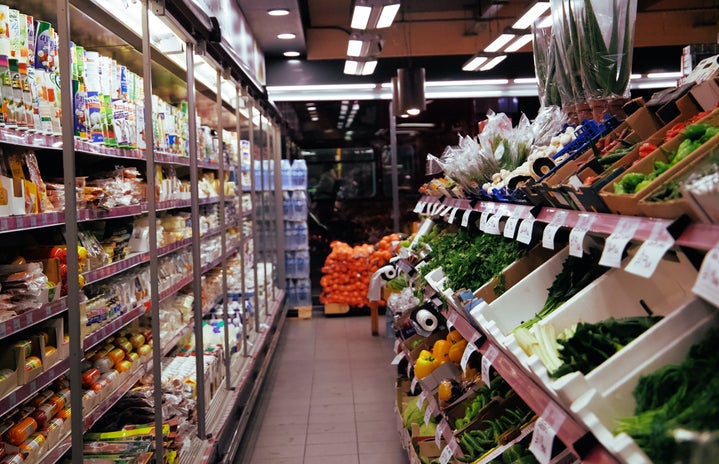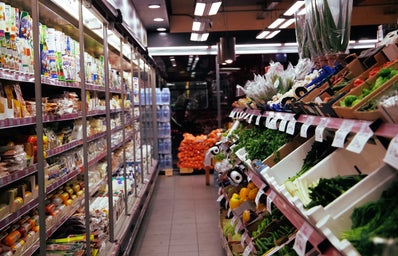With grocery prices on the rise, seeing the receipt at the end of a shopping trip can be a little scary. While many things may affect grocery prices, inflation has been one of the biggest culprits.
Issues such as supply chain shortages, extreme shifts and weather and disease are a few reasons those everyday food items continue to rise in price.
College students on a budget do not have the option to eat out for every meal. So how do students make sure they are getting well balanced meals that don’t cost an arm and a leg? Follow these simple swaps and tips that can make healthy eating just a bit more affordable.
Before even heading to the grocery store, sit down and make a rough meal plan for the week. This does not need to be followed throughout the week to a T but it is a good way to avoid purchasing a random combination of food that is not cohesive to a real meal. Looking through coupons for that week depending on the grocery store can also be a great way to save a few dollars here and there on those favorite snacks.
Vegetables
While eating fresh picked produce would be the ideal, it is not a reality for anyone living in a dorm room. Between cost, storing and preparing fresh vegetables, it may not be the best option. Instead try this method: buy one fresh vegetable for every two that can be bought canned or frozen. Alternating between the two allows one to increase vegetable intake without breaking the bank.
When considering which vegetables to buy fresh and what is better canned/frozen, think about what is more likely to be cooked compared to what will be eaten raw. Follow personal preference within the suggestions below to make sure to maximize the number of groceries purchased.
Vegetables such as cucumbers, bell peppers, celery and carrots are normally on the cheaper end and are commonly consumed while raw. Vegetables such as peas, broccoli, cauliflower and spinach are great when purchased frozen and can be added to noodles, ramen or rice to add a bit more green to every meal.
Corn, beans, tomatoes and legumes are often cheaper when canned than when raw and are great for saving room in the fridge and freezer for those options that are not best canned. Canned vegetables can be consumed “raw”/straight out of the can or can be cooked providing variety to how they can be used, and recipe options.
Fruits
Similar to vegetables, fruits can be tricky to purchase, store and consume before they go bad. Following what fruit is on sale and in season can help bring down the grocery bill. Fruit that can be stored at room temperature will save room in the fridge, cuties are a great example as they are easy to store, normally lower in cost and are quick and easy to prepare.
If fruit is non negotiable, follow similar methods in buying one fruit for the fridge, one for the freezer and one for the pantry. Frozen fruit is normally the cheapest of all three and can be used in smoothies, oatmeal or even eaten as is. Berries such as blueberries, strawberries, cherries and blackberries are great for all three options providing variety in daily meals.
Fresh fruit can be tricky as most fruit require a bit of preparation and buying pre-peeled, and cutting can get expensive. Berries and grapes are a great option for a quick and easy snack with little preparation required besides a quick wash. Apples, oranges/cuties and bananas are a great option that can stay outside the fridge. They can be eaten on their own or incorporated into many recipes.
Protein
In a dorm room, raw meats are not a reality for an easy go to protein. They have a low shelf life both before and after cooking, so unless grocery shopping twice a week is a standard, it is not the easiest to maintain sufficient protein levels. Trying purchasing items such as lunch meat, or precooked proteins such as tuna and chicken. While compared to a steak they may not seem as appetizing, when prepared right these options are an easy way to up weekly protein intake.
Vegetarian’s will always face the age-old question “How do you get protein?” College makes the question seem a bit more reasonable. Easy ways to incorporate protein without needing a kitchen includes cottage cheese, yogurt, eggs and canned beans such as chickpeas can be used to supplement cooked proteins such as tofu or tempeh. While vegetarian meat replacements are delicious, they add up on the grocery bill. Try only purchasing these items when they are on sale to avoid adding an extra $10 to the weekly grocery trip.
While grocery shopping can be very expensive, it doesn’t have to be with the right tips and tricks. Following any of the steps above may help cut off unnecessary costs and may reduce food waste throughout the week.




